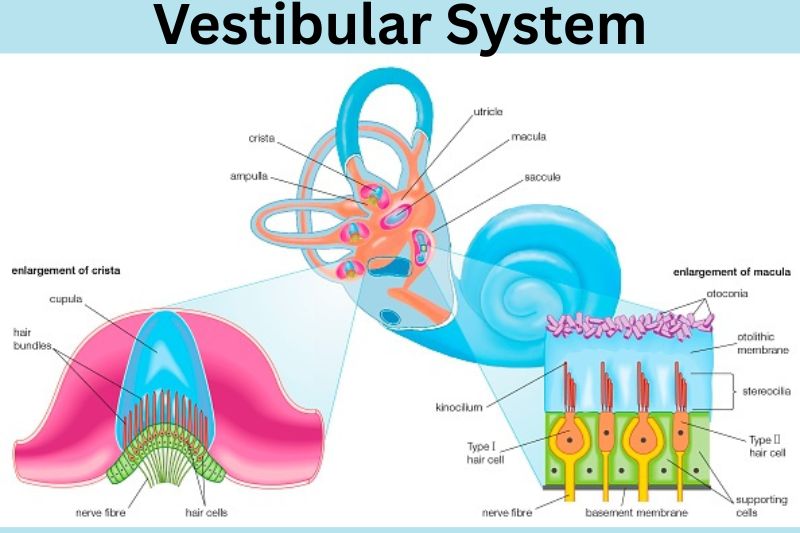Chiropractic Care for Dizziness and Vertigo
Dizziness and vertigo often signal deeper imbalances in how the brain and body communicate. Misalignments in the cervical spine, muscle tension, or nerve irritation can distort signals that regulate balance and orientation. Chiropractic care restores alignment, improves nerve flow, and retrains movement patterns, helping reduce disorientation and restore confidence. This approach addresses root causes rather than masking symptoms, offering patients lasting clarity and stability.

Dizziness and vertigo are more than fleeting sensations—they can quietly unravel your confidence, energy, and connection to the world around you. Whether it feels like the room is spinning, your balance is off, or you’re walking through life in a mental fog, these symptoms can deeply affect your ability to focus, drive, work, or even stand up without hesitation. And because they’re often invisible to others, it can be hard to explain just how disruptive and exhausting they really are.
Traditional treatments often aim to suppress symptoms: medications to dull sensations, rest to avoid flare-ups, or vague diagnoses like “inner ear issue.” But for many, these approaches never fully solve the problem—because they don’t address the root cause.
At Mountain Movement, we look at dizziness and vertigo through a different lens. Your sense of balance isn’t just controlled by your ears—it’s regulated by a complex system involving your spine, nervous system, muscles, fascia, and brain. When any part of that system is out of sync—especially in the upper neck—your brain gets distorted information, triggering disorientation, spinning sensations, or unsteadiness.
This is where chiropractic care shines. By restoring spinal alignment, improving nerve communication, and retraining the body’s balance systems, chiropractic offers a natural, whole-body approach to stability and sensory clarity. It's not about masking the symptoms—it’s about reconnecting the systems that keep you grounded, aware, and confident in your movement.
Understanding Dizziness and Vertigo
To truly address dizziness and vertigo, it’s important to understand what they are—and what they’re not. These terms are often used interchangeably, but they describe two different experiences.
- Dizziness typically feels like lightheadedness, floating, or general unsteadiness. You may feel off balance or disconnected from your surroundings, like you’re walking on a boat.
- Vertigo, on the other hand, is the sensation that either you or your environment is spinning. It often worsens with certain head movements and can lead to nausea or difficulty standing still.

Several systems contribute to balance and orientation:
- Inner ear dysfunction (vestibular system) is a common cause, where fluid imbalances or infections disrupt spatial awareness.
- Cervical spine misalignment, particularly in the upper neck, can distort proprioceptive input—how your body senses position—and affect blood flow to the brain.
- Head trauma or concussion can disturb the brain’s integration of balance signals from the eyes, ears, and spine.
- Nervous system imbalance, especially between the sympathetic (fight or flight) and parasympathetic (rest and recover) systems, may cause dizziness tied to anxiety, overstimulation, or fatigue.
- TMJ dysfunction and muscle tension in the neck and jaw can also influence both proprioception and inner ear function, further contributing to balance issues.
What’s key to remember is that your vestibular system, cervical spine, and brain all work together to keep you upright and oriented. If one piece of that system is off—even slightly—the result can be disorienting. That’s why true, lasting relief requires a full-body approach. Chiropractic care identifies and corrects the structural and neurological imbalances at the root of dizziness and vertigo, helping restore clarity, control, and calm.
The Cervical Spine’s Role in Balance
When it comes to balance, few people realize how crucial the upper cervical spine is in maintaining stability and orientation. This delicate area—where your skull meets the top of your spine—is packed with sensors, blood vessels, and nerve pathways that work together to tell your brain where your head is in space and how your body should respond.
Here’s how the upper cervical spine affects your sense of balance:
- Proprioception (head position awareness): Specialized nerve endings in the neck constantly send messages to the brain about the position and movement of your head. If these signals are off—even slightly—your brain can miscalculate where you are in space, leading to dizziness, unsteadiness, or a sense of floating.
- Blood flow to the brain: The vertebral arteries run through the cervical spine and supply blood to the brainstem and cerebellum—key centers for balance and coordination. Misalignments or tension in this area can restrict blood flow, reducing oxygen and nutrients to these sensitive areas and contributing to fogginess or spinning sensations.
- Neurological input to balance centers: The cervical spine is connected to the brainstem and cerebellum, which process signals from your eyes, inner ears, and muscles. When spinal misalignments disrupt this feedback loop, it can confuse your brain and trigger vertigo-like symptoms or postural instability.
Misalignments in the cervical spine—whether caused by whiplash, forward head posture, or even prolonged screen use—create distorted feedback to the brain. This leads to symptoms like:
- Spinning or vertigo
- Imbalance while walking or standing
- Brain fog or delayed reaction times
- A persistent feeling of being “off”
What’s more, poor posture and structural stress can keep your body locked in these patterns for years, quietly draining your confidence and mobility.
Chiropractic care focuses on correcting these upper cervical imbalances to restore proper proprioception, improve circulation, and calm overactive nerve signals. When alignment is restored, the brain starts receiving clearer messages—and that’s when real balance begins to return.
How Chiropractic Care Can Help
Cervical Spine Adjustments
The upper cervical spine is one of the most sensitive and influential areas of the nervous system. Even subtle misalignments here can irritate nerves, compress blood vessels, and distort how your brain processes head position and balance.
Through precise, gentle adjustments, chiropractic care:
- Restores spinal alignment to take pressure off irritated nerves and joints.
- Improves blood flow through the vertebral arteries, supporting brain oxygenation and function.
- Resets faulty brainstem input, which helps recalibrate how the brain perceives movement and orientation.
These adjustments are not forceful—they are tailored to the individual’s needs and designed to activate deep neurological pathways without causing strain.
Myofascial Release and Muscle Work
Muscles and fascia (the connective tissue that wraps around everything) are constantly feeding information to your brain about posture, tension, and movement. When the neck and jaw are tight—as they often are in those with dizziness—this feedback becomes distorted, overwhelming the nervous system.
At Mountain Movement, we:
- Release tension in key areas like the suboccipital muscles, sternocleidomastoid, and TMJ region.
- Address muscular compensation patterns, which develop when the body adapts to poor posture or unresolved injury.
- Restore balance between overworked and underactive muscles, so the brain receives more accurate proprioceptive signals.
This soft tissue work is a critical piece of the puzzle—it helps the body stop compensating and start stabilizing.
Balance and Movement Re-patterning
The brain constantly learns from how the body moves. When movement is unbalanced—whether due to poor posture, injury, or compensation—it creates faulty patterns that reinforce instability. Over time, your brain begins to “expect” disorientation or dizziness, even when the original trigger is gone.
Through targeted movement instruction and gentle balance retraining, chiropractic care helps:
- Teach the brain new, more efficient patterns, improving stability and orientation.
- Enhance proprioception—your internal sense of where your body is in space.
- Restore confidence in movement, reducing the fear and hesitation that often come with chronic dizziness.
At Mountain Movement, we use these strategies to help patients move in ways that rebuild neurological trust—so balance starts to feel natural again.
Nervous System Regulation
Dizziness and vertigo don’t just affect the body—they impact the entire nervous system. Many patients with chronic balance issues experience sensory overload, anxiety, and a hyperactive stress response. Chiropractic care plays a unique role in regulating this imbalance.
By restoring spinal alignment and reducing muscular tension, adjustments help:
- Activate the parasympathetic nervous system—the part responsible for calming, healing, and restoring.
- Lower the overall stress load on the brain and body.
- Improve sensory integration, so the nervous system becomes less reactive to movement, light, or sound.
This nervous system support is especially important for patients recovering from concussions, vestibular dysfunction, or anxiety-linked dizziness. When the brain stops perceiving the body as “under threat,” it can finally begin to heal and recalibrate.
Balance Comes from the Inside Out
Dizziness and vertigo may feel like surface-level symptoms, but they’re often signs of a deeper imbalance in the way your body and brain communicate. The systems that regulate balance—your spine, nervous system, muscles, and inner ear—are deeply interconnected. When one of them is misaligned or overwhelmed, the entire system can falter.
Chiropractic care focuses on restoring those foundational systems. Rather than masking symptoms with short-term fixes, it works to correct the root causes: spinal misalignment, distorted nerve signals, poor proprioception, and chronic tension. When those barriers are removed, your nervous system can recalibrate. Your body can trust its sense of space again. And you can finally move through life with more confidence, stability, and clarity.
Contact Mountain Movement Chiropractic & Natural Health
📍 1901 Laurens Road Suite E, Greenville, SC 29607
📞 (864) 448-2073
🌐 mountainmovementcenter.com
💬 Message us on Facebook
📅 Join Dr. Day at his weekly movement workshop with Bon Secours Well Walkers

We Treat the
Toughest Cases
We'd love to talk with you about yours. Ask us anything and we will get back to you with a detailed answer about your case.






